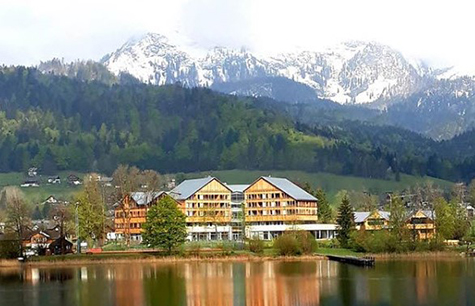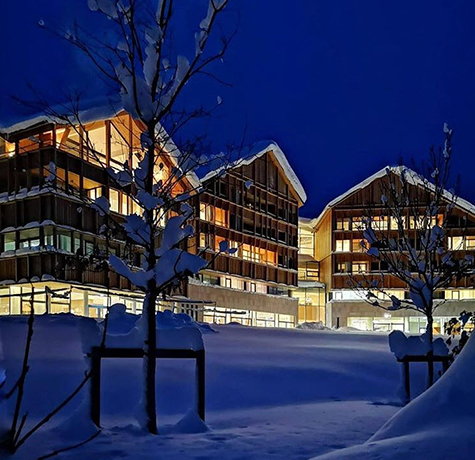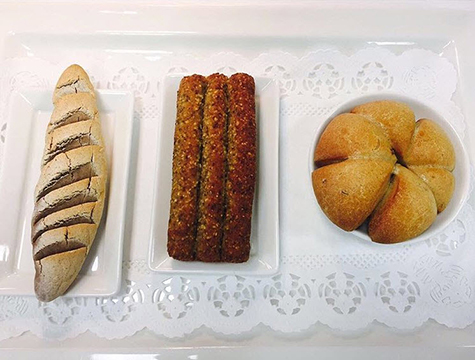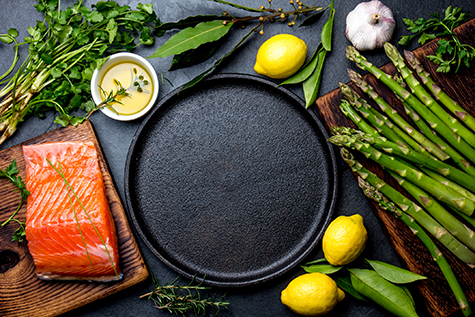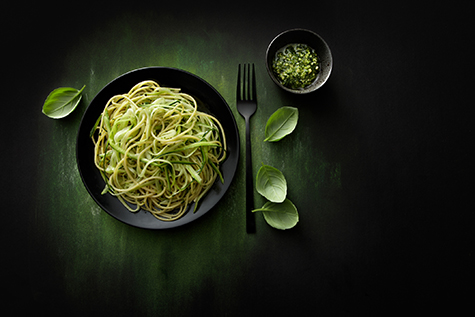Viva Mayr: A Place To Relax, Restore and Learn To Chew Your Food

I have been very fortunate to visit a number of wonderful spas including The Golden Door in Southern California, Sanoviv in Ensenada, Mexico (a medical spa), and others. Each offers an experience in healthy pampering and wellness.
Recently, I spent six days at Viva Mayr in the magnificent Austrian Alps. The philosophy of this world-renowned med-spa combines modern complementary medicine with traditional diagnostics and therapies according to the practices of Dr. Franz X. Mayr (1875-1965), an Austrian physician. Through his medical practice, he observed that health was determined by an effective digestive system. Food can either keep us healthy or make us ill, but nutrition must be viewed holistically. One’s lifestyle is also critical in maintaining our health. At the spa, once they have diagnosed and treated your condition, you are taught proper nutrition combined with moderate exercise and improved mindfulness to help sustain a better path to health. I was in!
I arrived in March when there was still plenty of snow cloaking the surrounding peaks, hoping to detox from travelling and a steady diet of stress, work, and too many processed meals on the run.
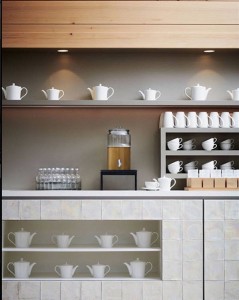 My orders from Viva Mayr were to avoid caffeine, alcohol (which I don’t usually consume) and smoking (which I don’t do at all) the week before I was to arrive. The medical staff took my health history, including all medications and supplements, and drew a pint (!) of blood for analysis. Viva Mayr creates individualized programs designed to treat each person’s unique health issues. Because the philosophy is promoting health by healing the gut, for the first three days you are put on a detoxifying, low-gluten diet of bullion, spelt or buckwheat crackers, and 3 oz. of fish (no meat, sugar, salt or fat). Good thing there was plenty of great scenery to keep my other senses occupied.
My orders from Viva Mayr were to avoid caffeine, alcohol (which I don’t usually consume) and smoking (which I don’t do at all) the week before I was to arrive. The medical staff took my health history, including all medications and supplements, and drew a pint (!) of blood for analysis. Viva Mayr creates individualized programs designed to treat each person’s unique health issues. Because the philosophy is promoting health by healing the gut, for the first three days you are put on a detoxifying, low-gluten diet of bullion, spelt or buckwheat crackers, and 3 oz. of fish (no meat, sugar, salt or fat). Good thing there was plenty of great scenery to keep my other senses occupied.
Depending on one’s individual program, you can participate in yoga, meditation, biking, swimming and there is a full gym available. You have appointments with the doctors on staff each day to discuss goals and sessions with a chiropractor are available. There are detoxifying salt treatments (which draw out toxins from the body), massages and hyperbaric therapy (which is when you strap on a mask and breathe air that’s the composition of the atmosphere at 10,000 feet combined with pure oxygen). You are encouraged to drink two-to-three liters of water per day. You are also encouraged to relax, de-stress, and become emotionally balanced, which I especially enjoyed.
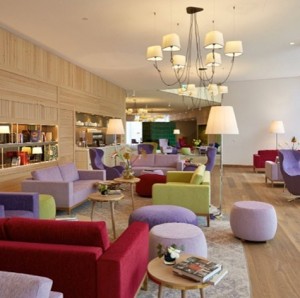 I found the first three days quite challenging, but by the end of six days I felt light and refreshed, and re-energized. Viva Mayr recommends a 10-14 day stay for maximum benefit. They send you home with a regime of vitamins, supplements and a diet designed to make your body more alkaline. It is then up to each of us to maintain healthier life choices.
I found the first three days quite challenging, but by the end of six days I felt light and refreshed, and re-energized. Viva Mayr recommends a 10-14 day stay for maximum benefit. They send you home with a regime of vitamins, supplements and a diet designed to make your body more alkaline. It is then up to each of us to maintain healthier life choices.
Although their regime is very strict, the Viva Mayr program helps to reset your body and learn how to keep things in balance according to your body’s individual needs and chemistry. I did come away with some easy-to-apply changes that anybody can do:
- Chew your food until it is fully liquified. The digestive process begins in the mouth. Pay attention next time you eat a meal—most people chew a little bit then gulp down their food.
- Drink three liters of water every day. This is not revolutionary—every diet and health plan recommends this to flush out toxins and help nutrient exchanges in the cells.
- No sugar. You’ve heard this before, too. Naturally occurring sugar from fruit is okay in moderation.
- For optimal gut health, don’t eat raw fruits or vegetables after 4:00 p.m., otherwise your digestive system doesn’t have time to fully process them before you sleep.
- Remember to eat breakfast like a king, lunch like a prince, and dinner like a pauper!
Guests who stay for the full session or more at Viva Mayr get to partake of wonderful food served in their dining room. In fact, there is a cookbook called, Eat Alkaline written by their head chef, Emmanuela Fischer with the assistance of their chief physician, Dr. Harald Stossier that includes wonderful recipes.
Their philosophy of alkaline eating helps the body synchronize metabolism, digestion, excretion, respiration and detoxification for ultimate health maintenance. For example, acid-forming foods include animal protein, grains, alcohol, caffeine and warm-pressed vegetable oils. Alkalizing foods include almost all vegetables, particularly potatoes, milk, cream (but not cheese), ripe local fruits and cold-pressed vegetable oils. Many diseases are linked to hyper-acidity in the body, so Viva Mayr’s recipes help the body maintain proper balance. They also take advantage of seasonal availability for optimal quality and freshness.
The cookbook is organized around the seasons, but here in California where I live, you can get most produce year-round. Following are some appealing recipes I found in the Viva Mayr Principle cookbook.
Medallions of Wild Salmon with Green Asparagus & Apricot-Carrot Salsa
Serves 4
Ingredients
4 salmon fillets, about 5 oz. each
Grated lemon peel to taste
Sea salt
3 Tbs. cold pressed extra virgin olive oil
1 bunch baby leeks
1 lb. green asparagus
3-4 Tbs. low sodium vegetable stock
2 Tbsp. fresh basil, chopped
For the Apricot Salsa
8 oz. fresh apricots, diced
8 oz. raw carrots, diced
3 Tbs. coconut oil
2 tsp. sea salt
1 Tbs. curry powder
2 Tbs. chopped ginger root
Juice of 1 lemon
½ tsp. seeded, chopped fresh jalapeño
4 oz. carrot juice
Instructions
For the Salsa:
- Cut apricots and carrots into small dices, sauté in hot coconut oil for about 10 minutes until just tender.
- Add the spices and lemon juice. Continue cooking and gradually add the carrot juice and a bit of water.
- After 25-30 minutes the mixture should have a creamy consistency. Season to taste and let cool.
For the Salmon:
- Marinate the salmon fillets in 2 Tbs. olive oil, lemon peel and salt.
- Wash the leeks well in running water and cut into thin strips lengthwise. Wash the asparagus, trim off the woody bottoms and cut the stalks into 2-inch pieces.
- Sauté the leeks and asparagus in olive oil and season with salt; add 2 Tbs. of the vegetable stock and simmer for 2-3 minutes until the liquid has been cooked off; remove from heat and add the chopped basil.
- In a non-stick pan over medium heat, brown the fish in the remaining 1Tbs. of olive oil, about 2 minutes on each side until just done.
- To serve, arrange the asparagus and leeks on four plates and place the salmon on top; serve the apricot salsa separately.
For most people, making gnocchi (potato dumplings) is a little bit intimidating. This recipe is pretty simple and looks delicious.
Gnocchi with Squash and Zucchini Linguine
Serves 4
Ingredients
2 ¼ lb. russet potatoes
4 egg yolks
4 Tbs. potato starch
Sea salt
Fresh ground pepper to taste
¼ tsp. ground nutmeg
3 Tbs. cold pressed extra virgin olive oil
1 lb. zucchini
1 lb. butternut squash
1 ½ cup low sodium vegetable stock
½ cup fresh chopped herbs—basil, oregano, Italian parsley
½ cup pesto (check out some of my pesto recipes here if you need one)
Preparation
- Boil the potatoes in their skins until soft (about 20 minutes); peel and pass through a potato ricer.
- Stir in egg yolks, potato starch, salt, pepper, nutmeg, and 1 Tbs. olive oil; knead until the dough just comes together (if it becomes too sticky, add a little more potato starch).
- With your hands, shape the dough into small ovals, about 1 ½ inches long; cook in gently boiling water for 2-4 minutes or until the gnocchi rise to the surface; remove from the water with a slotted spoon and set aside in a bowl with the remaining olive oil and the chopped herbs.
- Using a vegetable peeler or a spiralizer, cut the zucchini and the butternut squash into ‘noodles’; steam gently in the vegetable stock for 2-3 minutes, drain, then season with salt and pepper to taste.
- Divide the ‘noodles’ into 4 bowls, divide the gnocchi evenly into the bowls and serve with a drizzle of pesto for extra flavor.
